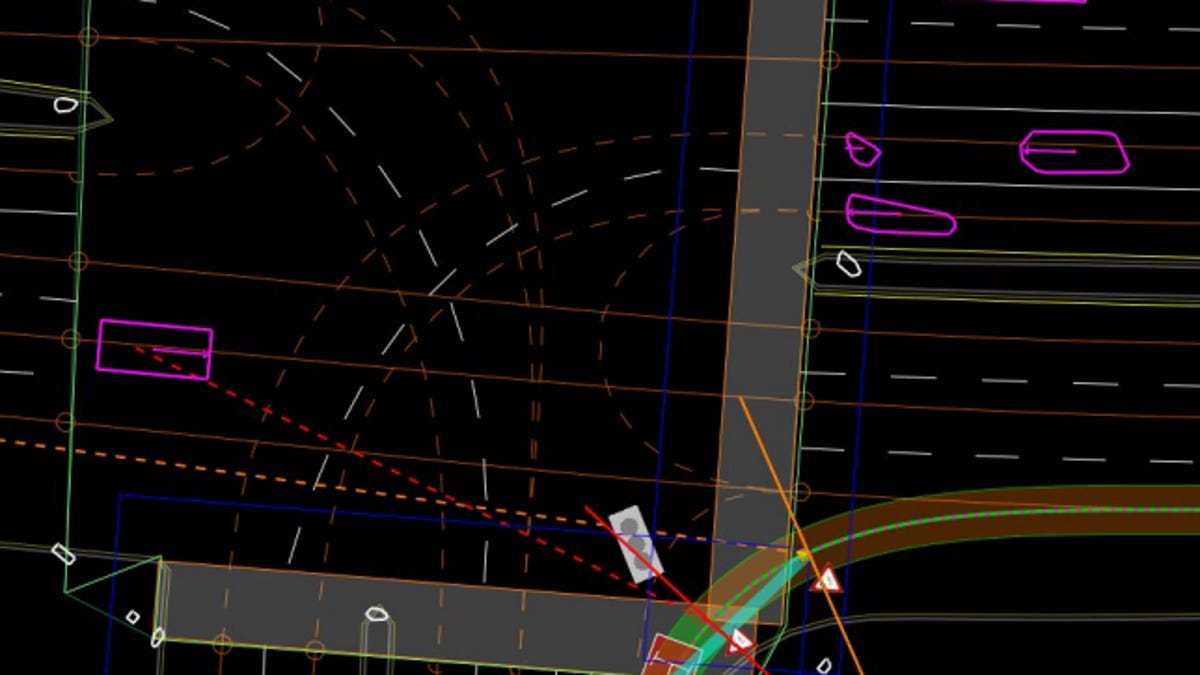Here's what Google's self-driving cars have been up to in November
Accidents, traffic stops and right turns on red take center stage as the Internet giant's autonomous vehicles cover 10,000 or more miles per week.

This is what Google's self-driving car sees when it attempts to make a right turn on red. The orange line represents the forward creep required to see oncoming traffic.
Every month, Google releases a report detailing the goings-on (PDF) of its autonomous fleet. To Google's benefit, the updates are usually light on dramatics -- after all, the company's spent good money to keep its cars from getting into accidents. But bad things occasionally happen, and although November was a relatively easy month, the car is still learning.
Currently, Google's self-driving-car family includes 23 Lexus RX450h hybrid crossovers and 30 of the company's own gumdrop-shaped prototypes. Most are located in Mountain View, California, but a dozen are off in Austin, Texas, as well. Its fleet averages between 10,000 and 15,000 autonomous miles per week.
The most notable event from the last month was a widely publicized traffic stop, when police pulled over one of Google's prototypes for driving 24 miles per hour in a 35-mph zone. The company noted that its fleet is capable of both hearing sirens and seeing flashing lights and that the cars are programmed to pull over or drive much more cautiously when emergency vehicles are approaching.
Its cars are still learning in other ways, as well. Google devoted part of its report to explaining how the company's self-driving fleet is learning to make right turns on red, a maneuver that's not always easy -- or legal. The cars are now creeping forward to get a better look at oncoming traffic, but its sensors are still capable of monitoring sidewalks, crosswalks and other vehicles at the same time.
There was only one autonomous accident this month, and it happened to one of Google's Lexus RX models. "A vehicle approaching from behind came to a stop and then rolled forward and collided with the rear bumper of the Google [autonomous vehicle]," the report states. Both cars sustained minimal damage, and once again, the human was the weak link. This marks the 17th accident in six years of its self-driving-car project, none of which have been considered Google's fault.

